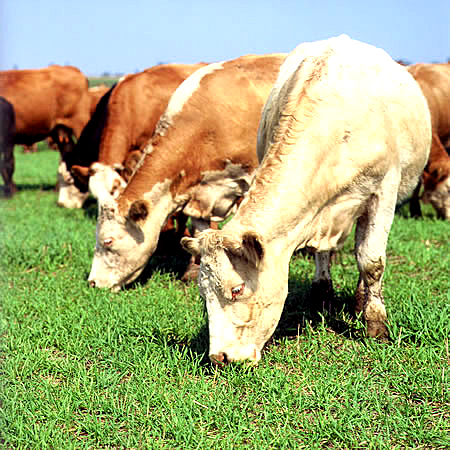
Today’s blog entry is by Kyle Stutt from the Noble Foundation
and first appeared in the Cattle Today e-newsletter.
With the end of the spring breeding season coming to a close, it’s time to start planning the next step for the cows in your herd pregnancy evaluation. Pregnancy evaluation in cattle is an important and valuable management tool. Checking the pregnancy status of your cow herd allows you to make timely culling decisions and focus your resources on the sound, reliable breeders in the herd.
I hope “preg checking” is an annual ritual for your herd. If you have not incorporated this management practice in the past, the dry conditions this year and the need to get rid of a few cows may force you to do so. When it comes time to cull cows from your herd, pregnancy status is one of the first criteria that will determine whether a cow stays in the country or goes to town.
According to the results of a survey conducted by the National Animal Health Monitoring System, fewer than 20 percent of beef cow calf producers used pregnancy testing or palpation in their herd. However, the benefits of this practice are fairly simple to realize. First of all, pregnancy diagnosis allows producers to identify “open” or non-pregnant cows that won’t behaving a calf next year. Compare the roughly $5 per head cost of a pregnancy exam with the $100 per head cost of hay alone to feed an open cow through the winter (if you can find hay for $30 per roll). It is easy to see that pregnancy testing quickly pays for itself.
Second, pregnancy testing will provide a producer with the information of when cows will be calving based on the age of the fetus at the time of the pregnancy exam. An average calving date can be calculated and the producer can use this information to better supplement, the cows through the winter. The nutrient requirements of cows increase as pregnancy progresses, and having this information will allow a producer to adjust the supplementation in a timelier manner.
Finally, if the herd needs to be culled and pregnant cows need to be sold due to drought and lack of pasture, knowing the pregnancy status of the cows will be appealing to potential buyers. Buyers will be looking to purchase cows that will calve closely in line with the cows already in their own herds.
Pregnancy diagnosis is a quick and simple procedure that requires a trained technician, usually a veterinarian. There are two practical methods for pregnancy diagnosis in beef cattle: 1) rectal palpation and 2) transrectal ultrasonography. Rectal palpation is most common and is an accurate form of pregnancy diagnosis that can be performed after day 35 of pregnancy. Most veterinarians are proficient at rectal palpation, and this procedure requires little time in the squeeze chute. Transrectal ultrasonography, commonly referred to as ultrasound, can be used to detect pregnancy as early as 28 days with a high degree of accuracy. This method can be employed just as quickly as rectal palpation when done by a skilled technician and may provide additional information that cannot be determined by rectal palpation. Using transrectal ultrasonography, the technician is actually “looking” at the fetus and can determine the viability of the fetus and the incidence of twins. It is also possible to determine the sex of the fetus between days 60 and 90 of pregnancy.
A final piece of information to keep in mind is to sell cull cows early. The market for cows is usually good through September, and then the price goes south at a fairly rapid pace until it bottoms out in November. So, pull the bulls at the end of the breeding season, schedule to pregnancy check your cows about 35 days later, and get rid of the open cows and other culls before cow prices take a nose dive.
